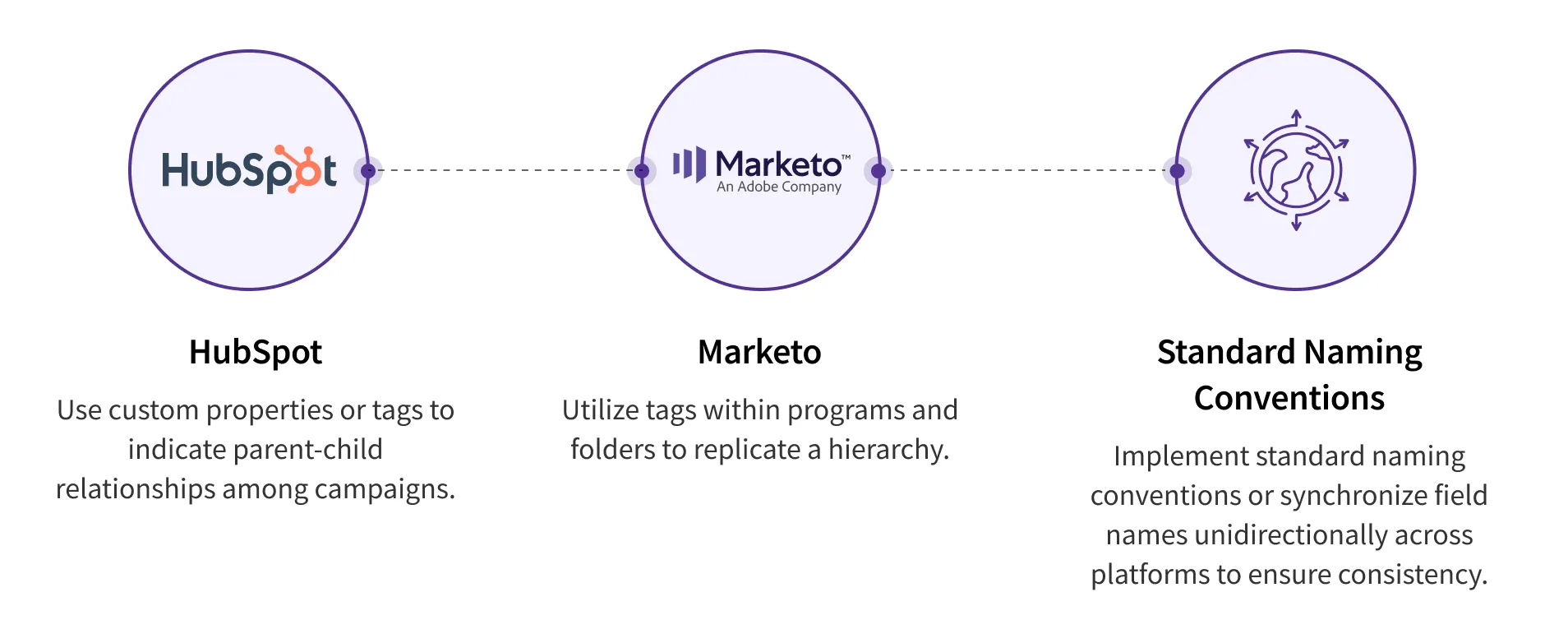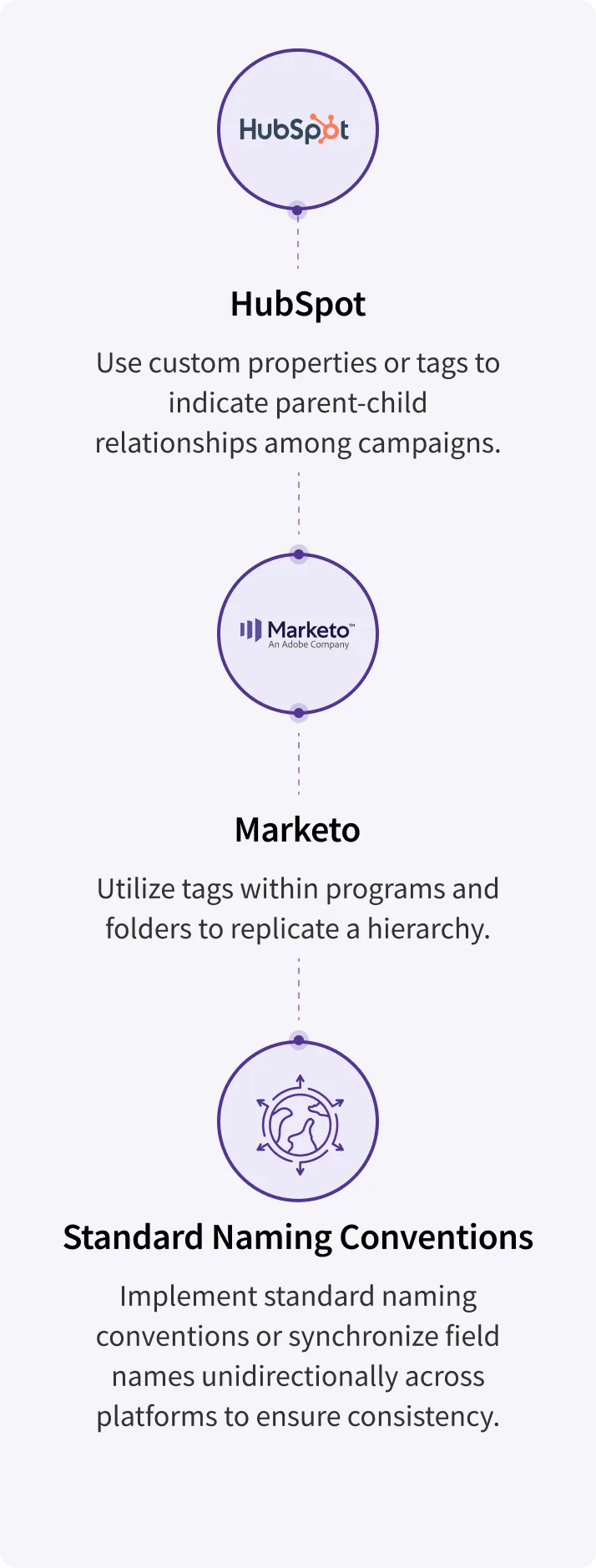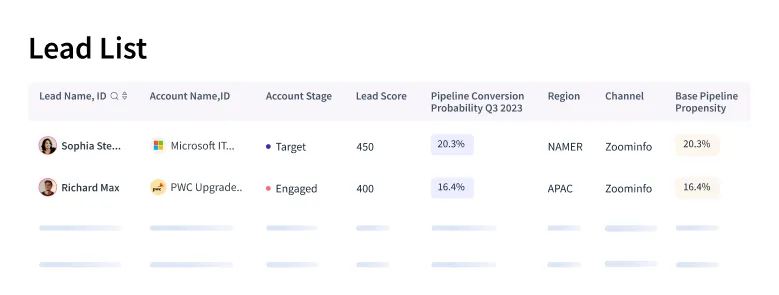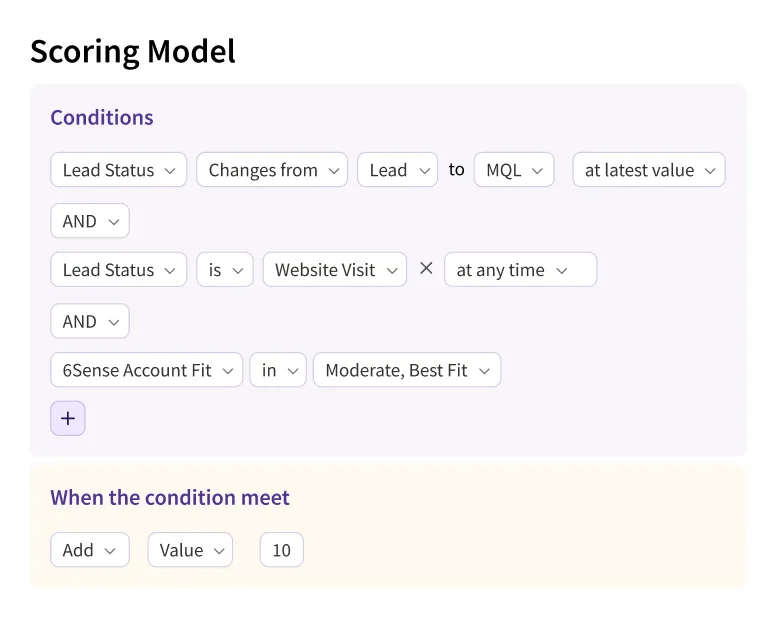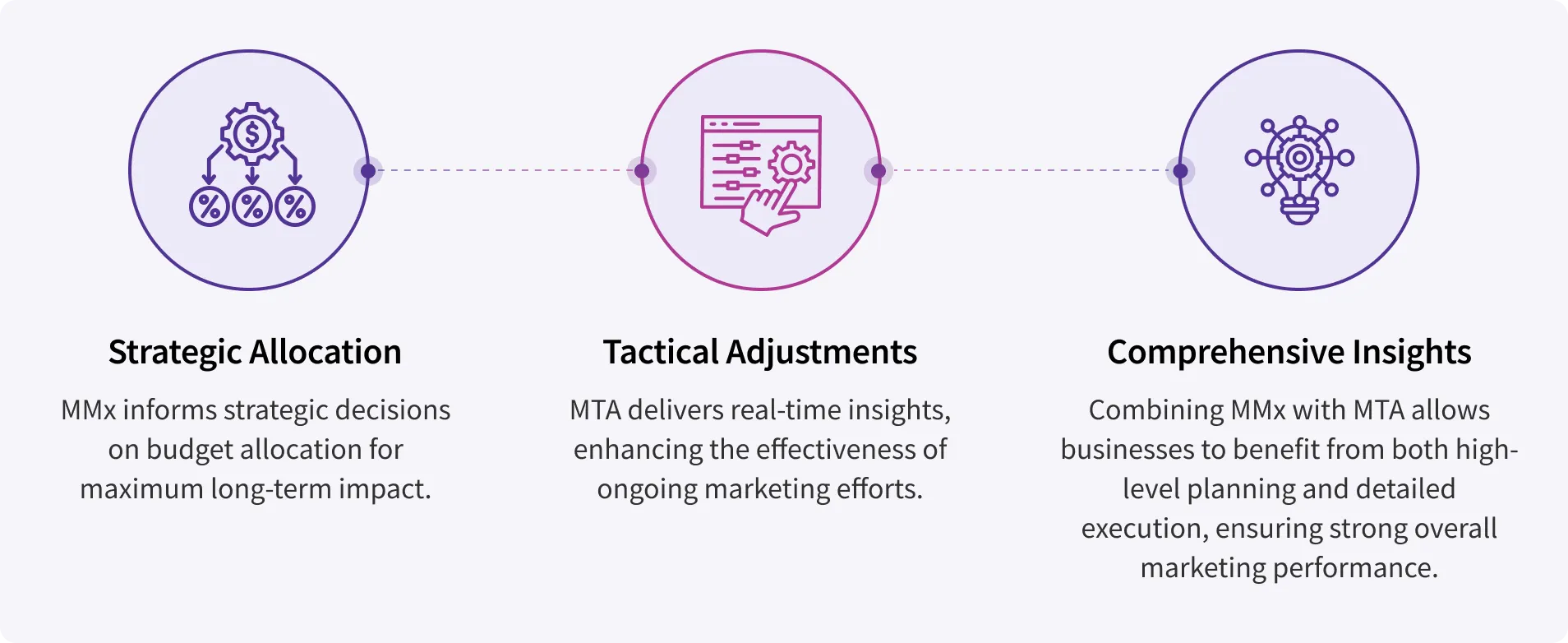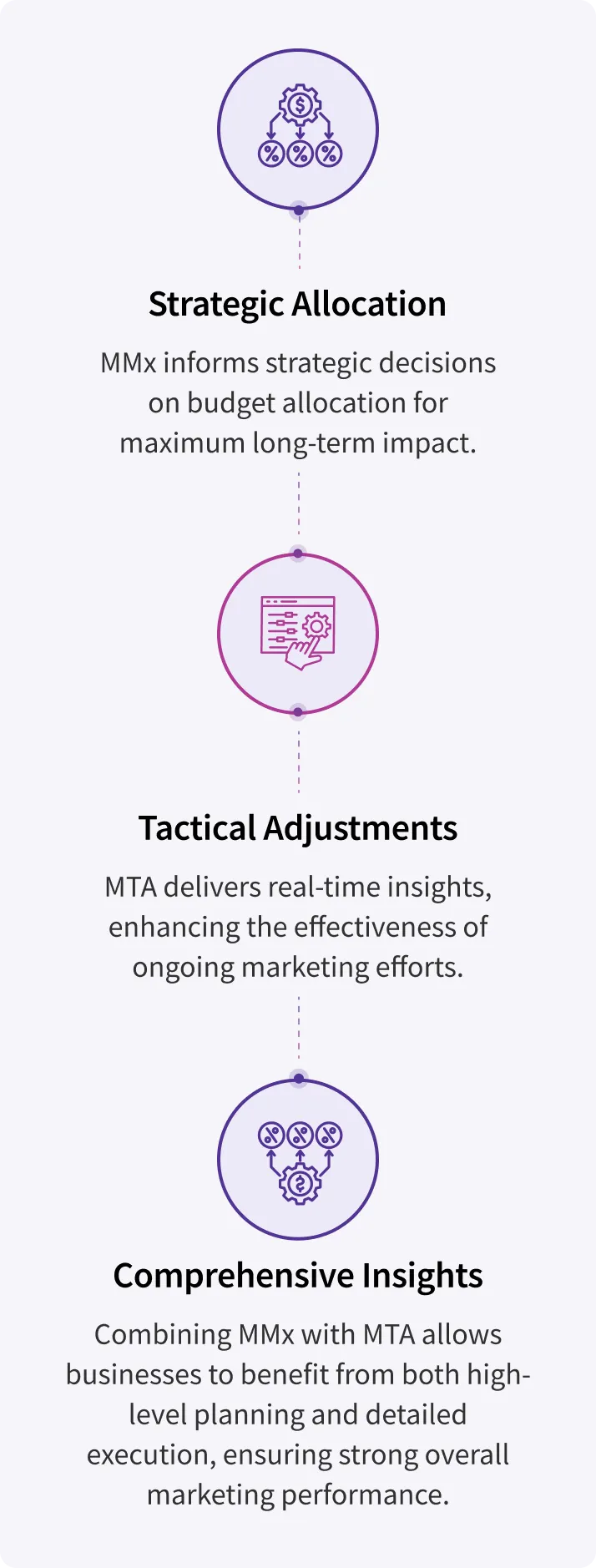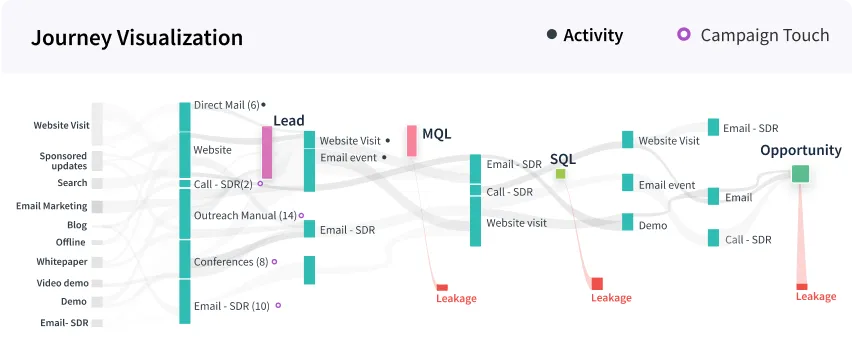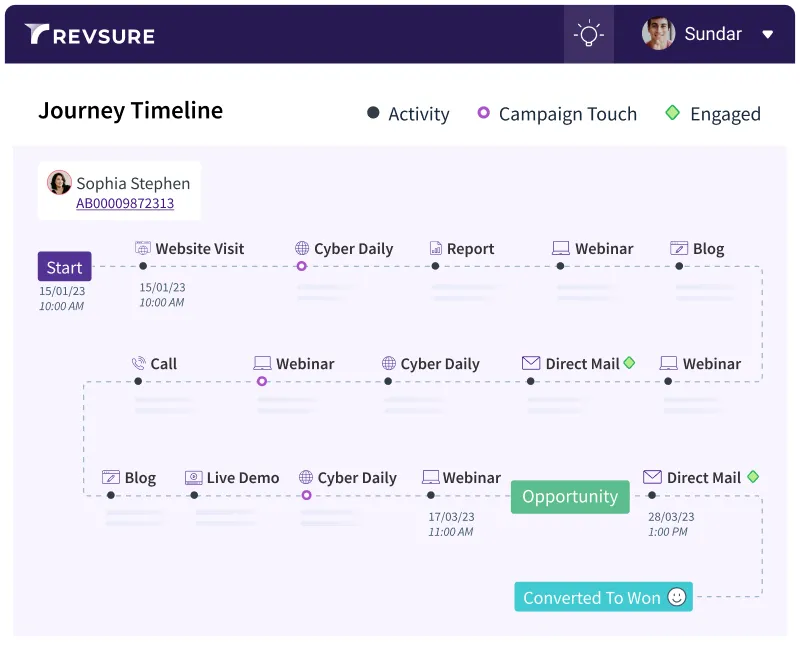Introduction
Effective marketing attribution is a journey with a clear goal, though the path to achieving it isn't always straightforward. Marketing teams must carefully set up their processes, systems, and data analytics to succeed. Getting the right inputs into the "system" is half the battle; the other half involves adopting an attribution method that generates valuable insights at both strategic and operational levels.
For marketing and marketing operations teams beginning their attribution journey, learning from the best practices of seasoned experts is invaluable—whether employing a marketing mix or a touch-based approach.
More experienced marketers will recognize that, historically, the focus has been more on consistent reporting than on building attribution models that scale demand generation. However, with AI/ML and well-validated inputs, it's now possible to achieve both consistently, driving greater value from attribution.
How to Set Up Workflows Between the MAP and CRM
Integrating Marketing Automation Platforms (MAP), such as HubSpot or Marketo, with Customer Relationship Management (CRM) systems like Salesforce, is crucial for ensuring a seamless flow of information. The default Salesforce integration allows for the bi-directional exchange of data, which is important because leads often enter through the MAP, while offline interactions-such as sales calls and in-person events—are captured in the CRM. Additionally, some leads or contacts may originate in Salesforce, while online events, webinars, and emails are tracked in the MAP. Sales-related emails may also be sent from the CRM or tools like Outreach.
Overcome Application Limits: Salesforce limits a lead/contact to responding to a campaign only once. To work around this, use an attribution tool that stitches together multiple responses to gain a complete understanding of customer journeys.
Data Sanitation: Ensure clean data by using third-party enrichment tools and requesting corrections during sales calls.
Personalized Integration: Integration setups can vary significantly by company, often determined by business lines, geography, verticals, or specific reporting needs.
Phone Number Formatting: Mixing extensions with main numbers (e.g., "555 1212 ex 232") instead of using separate fields for extensions and notes.
Data Consistency and Integrity: Maintaining consistent and accurate data across platforms can be complex but is critical for accurate attribution. Common issues include:
Incorrect Use of Name Fields: Sales reps leaving notes in name fields (e.g., "Sam (lady)" or "Robert replaced Sally") can disrupt email automation, enrichment mapping, and other workflows.
Inconsistent Country Naming: Free-form entry on country names often results in variations like "US," "USA," "United States," or "America."
Attribution Planning Checklist
Set up clear workflows for MAP and CRM integration.
Implement thorough data sanitation protocols.
Use an attribution tool to manage multiple campaign responses.
Ensure data consistency across platforms, especially in name, country, and phone fields.
Example Checklist
LinkedIn and Google Ads campaigns and members synced to SFDC
Campaign spends data available to be pushed into RevSure
Higher API limits for data extraction for historical data
Campaign spends data available to be pushed into RevSure
Bi-directional sync between Marketo and SFDC
Provision UI access for RevSure CS or manual exports of campaign and activities datasets from 6sense
UTMs getting captured on Leads and contacts in SFDC/Marketo. Even better is to make use of click IDs like Google’s GCLID
Activities mapped to SFDC
TTL configuration on Marketo at least two years
Opportunity history tracking
6sense data flowing into SFDC Account attributes
In case history tracking is unavailable, there must be custom fields to track stage movements for leads and Opportunities. Timestamps are better than dates because “time granularity” impacts attribution.
Campaign Hierarchy Setup
Setting up a campaign hierarchy depends on a company's structure. Most B2B SaaS companies organize campaigns by industry verticals and market segments, while some prioritize geography first, followed by industry. Additionally, many companies further segment search campaigns by branded search, competitor terms, and keywords.
Align the campaign hierarchy with how the business operates in practice. For instance, a company with global operations may prioritize geographic segmentation, while a business offering industry-specific solutions may focus on vertical segmentation.
Once the hierarchy is established, it can be difficult to change without disrupting reporting, making the initial setup decisions crucial.
Challenges with UTMs
It would be great if UTM parameters could disappear, but they remain essential for tracking campaign performance from inbound leads to company web pages. Since cookies can sometimes make UTMs persistent for hours, days, or even weeks, they consistently help identify the source, medium, content, and campaign that brought users to your site. However, issues can arise when multiple systems manage UTMs, leading to inconsistencies and inaccuracies.
Automate UTM Creation: Use automated rules to maintain consistency and accuracy across campaigns.
Adapt to GA4: Stay informed about changes introduced by GA4 to ensure accurate UTM tracking.
Custom Tags: If you're integrating multiple systems with critical UTM tags, consider using custom tags like those employed by HubSpot, Marketo, and others to prevent tags from being overwritten.
Outdated Parameters and Misspellings: Relying on UTMs can lead to issues such as outdated parameters, misspellings, and overwriting by ad platforms.
Overwriting in Email Workflows: For example, placing UTMs in hypertext links within an email newsletter is common, but they may be overwritten by the email workflow (such as in HubSpot).
Complex UTM Setup: MAP settings for automating UTM creation can introduce inconsistencies. For instance, HubSpot can either overwrite UTMs based on its campaign or only "add" UTMs when none exist within a URL (ensuring every link is tagged).
Consistency Across Channels: Ensuring UTMs are consistently implemented and tracked across all marketing channels is a difficult challenge-which is why it would be nice if UTMs could just go away!
Custom UTM Tags for Various Platforms

hsa_cam: HubSpot Ad Campaign
hsa_grp: HubSpot Ad Group
hsa_src: HubSpot Ad Source
hsa_mt: HubSpot Ad Medium
hsa_ad: HubSpot Ad ID
hsa_net: HubSpot Network
hsa_kw: HubSpot Keyword
hsa_tgt: HubSpot Target

utm_campaign: Campaign identifier
utm_content: Content descriptor
utm_medium: Medium
utm_source: Source
Custom parameters based on needs

pi_campaignid: Pardot Campaign ID
pi_emailid: Pardot Email ID
pi_source: Custom source tracking
pi_medium: Custom medium tracking

mc_cid: Mailchimp Campaign ID
mc_eid: Mailchimp Email ID
Custom parameters for detailedtracking

elqCampaignld: Eloqua Campaign ID
elqSiteld: Eloqua Site ID
elqFormName: Eloqua Form Name
Custom parameters for specific tracking
The Rise of Privacy Protections
How UTM Parameters Are Being Removed
As privacy becomes a central focus for tech companies, tools like UTM parameters are under increasing scrutiny. For example, Apple's latest updates with iOS 17 and macOS Sonoma now automatically remove UTM parameters in Safari's Private Browsing mode and apps like Mail and Messages. This is part of their Link Tracking Protection feature, aimed at enhancing user privacy by blocking third-party tracking.
Other browsers like Brave and DuckDuckGo are also implementing similar features, while Mozilla Firefox and Google Chrome offer solutions via privacy-focused extensions like ClearURLs. Although Internet Service Providers (ISPs) generally do not block UTM parameters, the shift toward privacy protection presents challenges for marketers who rely on these tools for accurate tracking and analytics.
Implications
For Users
Improved privacy and reduced tracking across websites and apps.
For Marketers
Potential impact on campaign tracking accuracy, driving the need for alternative tracking.
How to Set Up Parameters URLs
Persistent tracking is crucial for accurate attribution, especially as cookies are phased out. Companies must increasingly rely on tools from Google, Meta, and server-side tracking to maintain accurate data. Tracking third-party sites, including sponsored content, has historically been difficult without UTMs.
However, UTM parameters can create numerous issues when misspelled, applied inconsistently, or overwritten by different components of the martech stack. The ideal scenario would be no reliance on UTMs-but that's a platonic ideal not achievable in the real world.
Automate UTM Setup: Automate UTM parameter setup and ensure persistent tracking from landing pages to conversions.
Carry UTM Parameters Through the User Journey: Implement strategies to ensure UTM parameters follow the user from their first interaction to final conversion.
Use Tools and Documentation: Utilize a UTM parameter builder tool and maintain clear documentation. For example, decide whether the utm_campaign should reflect a MAP campaign name or an SFDC campaign name to maintain consistency.
Decreasing Reliance on Cookies: As reliance on cookies diminishes, it's necessary to shift to new tracking methods such as server-side tracking and first-party data collection.
Transitioning to Privacy-Compliant Tracking: Navigating the transition from traditional cookie-based tracking to modern, privacy-compliant methods is complex but essential.
Managing Conflicts Between Systems: To avoid conflicts between SFDC and MAP campaign names, consider mapping one campaign structure onto the other.
Persistent tracking is crucial for accurate attribution, especially as cookies are phased out. Companies must increasingly rely on tools from Google, Meta, and server-side tracking to maintain accurate data. Tracking third-party sites, including sponsored content, has historically been difficult without UTMs.

Salesforce uses a hierarchical structure for campaigns, enabling the creation of parent and child campaigns. This setup provides a comprehensive view of marketing initiatives and facilitates detailed organization.
Key Features

HubSpot does not support a hierarchical structure for campaigns similar to Salesforce. Instead, campaigns in HubSpot are standalone entities without parent-child relationships.
Key Features

Marketo, while lacking a formal parent-child campaign structure, offers programs and folders to organize campaigns more effectively, similar to Salesforce.
Key Features
Addressing Single Point of Truth (POT) in a Mixed Software Environment
Maintaining a single point of truth (PoT) in a mixed software environment is critical for ensuring consistency across platforms. While Salesforce is often used as the central hub, it may not cover all aspects comprehensively. The goal is to achieve a unified view of data across all systems to support accurate decision-making.
Define and Standardize: Establish clear definitions of key elements such as stages, starts, and journeys. Regularly test against these definitions to ensure consistency.
Use Data Integration Tools: Implement robust data integration tools to merge information from various sources into a single, coherent dataset.
Leverage Al Tools: Explore Al-driven solutions to stitch together data, touchpoints, costs, and results for a comprehensive view.
Ensuring Data Consistency: Maintaining consistency across different systems is complex and requires careful management of data interactions.
Ongoing Monitoring: Managing discrepancies and ensuring that all systems reflect the same information is an ongoing process that demands constant monitoring and adjustments.
Advanced Segmentation and Personalization
Effective segmentation relies on using criteria such as Ideal Customer Profile (ICP), geography, verticals, firmographics, and market segments. Personalization enhances marketing effectiveness by tailoring content and messages to specific leads and accounts, driving better engagement.
HubSpot Smart Content and Mutiny: Use advanced tools like HubSpot's smart content and Mutiny for enhanced segmentation and personalized marketing.
Al and Machine Learning: Leverage Al and machine learning to dynamically segment audiences based on behavior and engagement.
Accurate Segmentation: Great segmentation is necessary to fully harness the power of personalization. Accurate data collection and management are key to creating meaningful segments.
Relevance Without Intrusiveness: Ensuring personalized content is relevant and adds value to the customer experience, without crossing the line into being intrusive, is crucial for success.
Smart content, Personalization tokens
Dynamic & personalized web experiences based on visitor attributes.
https://www.hubspot.com/products/cms
Personalization tokens, Smart rules, Segmentation list
Personalized email campaigns based on behaviors, preferences and interactions.
https://www.hubspot.com/products/crm
Real-time personalization, Segmentation
Tailored web experience for different customer segments.
AI-driven personalization, Dynamic content, Recommendations
Enhanced user experience through tailored content and recommendations.
https://www.dynamicyield.com/
Comprehensive marketing automation and personalization.
Enhanced user experience through tailored content and recommendations.
Personalization email campaigns, Dynamic content, Lead nurturing
Align sales and marketing efforts with detailed insights.
https://www.salesforce.com/products/pardot/overview/
Personalization email campaigns, Dynamic content, Lead nurturing
Optimize and personalize web experiences for better engagement.
https://www.hubspot.com/products/chttps://www.optimizely.com/ms
Firmographic Data Integration, Dynamic Content
Highly targeted web personalization using firmographic data.
https://www.clearbit.com/
Lead Scoring and Qualification Models
Lead scoring should incorporate both actual and synthetic events, utilizing a more stochastic approach rather than a strictly deterministic one. While similar MQLS should receive comparable scores, there should be weighting based on ICP and other firmographics, supplemented by intent signals, ensuring that the "final" lead score is unique and nuanced.
Discovery Call: A real event, as it represents a tangible action that has occurred.
MQL, MQA, SQL: Synthetic events, as they are not always tied to a single real- world action. For example, a demo request might qualify a lead as an MQL, but a series of actions-such as multiple content downloads or attending a webinar- can also contribute to achieving MQL status.
Regression Testing: Use regression testing against past results to assess the effectiveness of lead scoring models, especially for validating machine learning-based systems.
Flexible Models: Ensure lead scoring models are adaptive to changes in market conditions and customer behavior.
Stakeholder Review: Regularly review lead scoring models with Operations, Marketing, and Sales teams to ensure alignment.
Complexity of Models: Managing the complexity of lead scoring models and ensuring there is enough data to properly train and validate them.
Data Balance: Balancing the amount of data collected or acquired through enrichment to avoid overwhelming or under-representing a lead's potential, while also keeping data acquisition costs manageable.
Multi-Channel Campaign Management
Multi-channel campaign management involves delivering consistent messaging across paid, earned, shared, and owned (PESO) channels. Ensuring consistency across all platforms is crucial for maintaining brand integrity and maximizing campaign effectiveness.
Modern marketing tools go further by using lead and account intent signals to tailor messaging. For instance, a new lead from an account with no intent but a good ICP score might receive one type of message, while a lead from a high-intent account with a VP, Director, or C-Level title would receive more personalized messaging or outreach.
Coordinated Bidding Strategies: Avoid bidding against the same users on multiple ad platforms by using a unified bidding approach.
Target Cohorts Carefully: Don't target the same audience cohort across different tools. For example, avoid using multiple ad platforms to separately target the same cohorts on LinkedIn and Meta, which can lead to inefficiency.
Centralized Campaign Management: Implement centralized tools to track and optimize performance across all channels.
Consistent Messaging and Avoiding Bidding Conflicts: Managing and aligning messaging across platforms while avoiding bidding conflicts, both across different platforms and within the same platform, is complex.
Holistic Data Integration: Ensuring that data from all channels is integrated to provide a comprehensive view of campaign performance is critical for optimization.
Data-Driven Decision Making in Marketing
Maximizing internal data while layering in external data, such as intent signals, and balancing these against cost is crucial for effective data-driven decision-making. This approach improves the accuracy and effectiveness of marketing strategies.
Leverage Al and Predictive Analytics: Use Al for data analysis and decision-making, applying predictive analytics to forecast trends and customer behaviors.
Invest in Data Integration and Quality: Invest in robust data integration tools and continuously validate data quality to maintain accuracy.
Balancing Data Costs and Accuracy: Managing the cost of external data while ensuring its accuracy can be difficult.
Data Integration: Integrating multiple data sources to form a cohesive and actionable dataset is often complex but essential for comprehensive insights.

Full Funnel Optimization Techniques
Full-funnel optimization involves improving every stage of the customer journey—from unknown prospects to closed won/closed lost deals, and even into renewals or repeat purchases. This holistic approach ensures that no part of the customer journey is overlooked.
Achieving a significant number of conversions each week can be challenging, especially for early and mid-stage companies or when promoting new products or services. Using synthetic events can help increase the volume of conversions to address this challenge.
Key Stages Include:
MQL (Marketing Qualified Lead)
SQL (Sales Qualified Lead)
SAO (Sales Accepted Opportunity)
Stages should not be abstract concepts but reflective of real actions taken by an organization to move leads down the funnel. Each stage highlights key points where specific, well-orchestrated engagement must occur. While different teams (sales, SDRs, BDRS, AEs, marketing, product marketing, event marketing, etc.) typically own specific stages, there must be strong coordination to ensure leads are nurtured even when they move through both active and idle sales stages-especially for mid-market and enterprise leads.
Offline Optimization: Focus on offline optimization for B2B SaaS by using account-based marketing and personalized sales outreach.
Lead Scoring: Ensure that each conversion has a unique value. A personalized lead score can help track this effectively.
Conservative Valuation: Avoid assigning large expected sales values unless the sale is nearly certain. Inflating values can negatively impact offline conversions as much as sending no value at all.
Feedback Loops: Implement continuous feedback loops to refine and improve funnel stages based on performance data.
Tracking Offline Interactions: Integrating offline interactions with online data can be difficult but is essential for full-funnel visibility.
Funnel Alignment: Ensuring that optimization efforts are coordinated across all stages of the funnel to provide a seamless customer experience is key to success.
Implementation of AI Tools in Marketing
Al tools can be custom built or sourced externally and then fine-tuned using a company's data. When used for lead scoring, intent scoring, and stitching cross-platform information together, Al can be highly effective in providing a comprehensive view of customer interactions.
Machine Learning (ML) has been experimented with since the 1950s and 60s and commercially applied since the 1980s. It represents a wide array of techniques and tools. It's important to always inquire about the specific techniques and tools being used when someone mentions Al, ML or Generative Al.
Tailored Insights: Use Al to deliver customized
insights for revenue optimization, lead scoring, and cross-platform data integration.
Company-Specific AI/ML: For the best results,
especially in sales and marketing ("Smarketing"), use AI/ML models that have been fine-tuned or trained on data unique to the company, as every sales journey is different.
Data and Costs: Managing data, controlling costs, and accessing the right expertise while keeping pace with rapidly evolving models.
Model Maintenance: Continuously evaluating and updating Al models to ensure they remain relevant and effective.
Marketing Attribution Models
Here is no one-size-fits-all attribution model. While some may prefer first or last touch models, more comprehensive approaches like linear, weighted models, or marketing mix modeling often provide deeper insights.
Actionability: Effectiveness is measured by how actionable and applicable the resulting data is in real-world marketing and sales decisions.
Comprehensive View: Ensuring all touchpoints are included offers a more complete picture of the customer journey.
Coverage: It's essential that models capture the full range of marketing and sales interactions to provide an accurate assessment.
Balance: Striking the right balance between simplicity and accuracy is key to creating models that are both easy to interpret and highly informative.

Best Practices for Marketing Automation Setup and Attribution for B2B SaaS
Gives 100% credit to the first touchpoint that led to the creation of the stage you are measuring attribution for (MEL/MQL/PQO/SQO/Closed Won).
Use when you want to find the very first campaign that led to the creation of the stage you're interested in.
Campaigns, Campaign Members, Leads, Contacts, Opportunities, Activities & Tasks.
Gives 100% credit to the last touchpoint that led to the creation of the stage you are measuring attribution for (MEL/MQL/PQO/SQO/Closed Won).
Use when you want to find the very last campaign that led to the creation of the stage you're interested in.
Campaigns, Campaign Members, Leads, Contacts, Opportunities, Activities & Tasks.
Gives 100% credit to each touchpoint throughout the journey from Suspect to the stage you are measuring attribution for (MEL/MQL/PQO/SQO/Closed Won).
Use when you want to credit intermediate campaigns that may have influenced progression but aren't the first or last.
Campaigns, Campaign Members, Leads, Contacts, Opportunities, Activities & Tasks.
Gives 100% credit to each touchpoint throughout the lead's journey, removing time-based causality.
Use to credit any campaign that a lead engaged with during their journey, regardless of order.
Campaigns, Campaign Members, Leads, Contacts, Opportunities, Activities & Tasks.
Gives equal credit to every touchpoint leading up to a conversion from Suspect to the stage you are measuring attribution for (MEL/MQL/PQO/SQO/Closed Won).
Use when you want to give all campaigns equal credit for progression through the funnel.
Campaigns, Campaign Members, Leads, Contacts, Opportunities, Activities & Tasks.
Gives 40% credit to the first touchpoint, 40% to the last touchpoint, and splits the remaining 20% among any middle touchpoints.
Use when you want to credit the first and last touchpoints while accounting for intermediate campaign effectiveness.
Campaigns, Campaign Members, Leads, Contacts, Opportunities, Activities & Tasks.
Gives 20% credit to the first touchpoint, 60% to the last touchpoint, and splits the remaining 20% among any middle touchpoints.
Use when the last touch is more important, but you still want to credit the first touch and middle interactions.
Campaigns, Campaign Members, Leads, Contacts, Opportunities, Activities & Tasks.
Gives 60% credit to the first touchpoint, 20% to the last touchpoint, and splits the remaining 20% among any middle touchpoints.
Use when the first touch is more important, but you still want to credit the last touch and middle interactions.
Campaigns, Campaign Members, Leads, Contacts, Opportunities, Activities & Tasks.
Gives 30% credit to the first touch, 30% to the middle touch, 30% to the last touch, and splits the remaining 10% across other touchpoints.
Use when you want to distribute credit more evenly across multiple touchpoints, including middle interactions.
Campaigns, Campaign Members, Leads, Contacts, Opportunities, Activities & Tasks.
RevSure's proprietary Al-based attribution uses advanced models (e.g., Markov Chains) to estimate the contribution of each campaign and touchpoint toward conversion, pipeline, and revenue, without relying on rules or opinion-based weights.
Use when you want a data-driven Al approach to attribution that doesn't rely on predefined rules.
Campaigns, Campaign Members, Leads, Contacts, Opportunities, Activities & Tasks.
Integrating Marketing Mix with Multi-Touch Attribution
Marketing Mix (MMx) and Multi-Touch Attribution (MTA) are complementary methodologies that, when used together, provide a comprehensive approach to optimizing marketing strategies.

Marketing Mix (MMx)
Purpose: MMx is used for high-level strategic planning, focusing on budget allocation across various channels (e.g., TV, radio, digital) to maximize ROI and pipeline generation.
Function: It analyzes historical data on spending and outputs over time, offering insights for long-term planning and budgeting.

Multi-Touch Attribution (MTA)
Purpose: MTA is used for detailed, tactical execution, tracking individual touches and interactions to optimize real-time decisions.
Function: It provides granular analysis, enabling marketers to adjust campaigns dynamically and improve day-to-day funnel management.
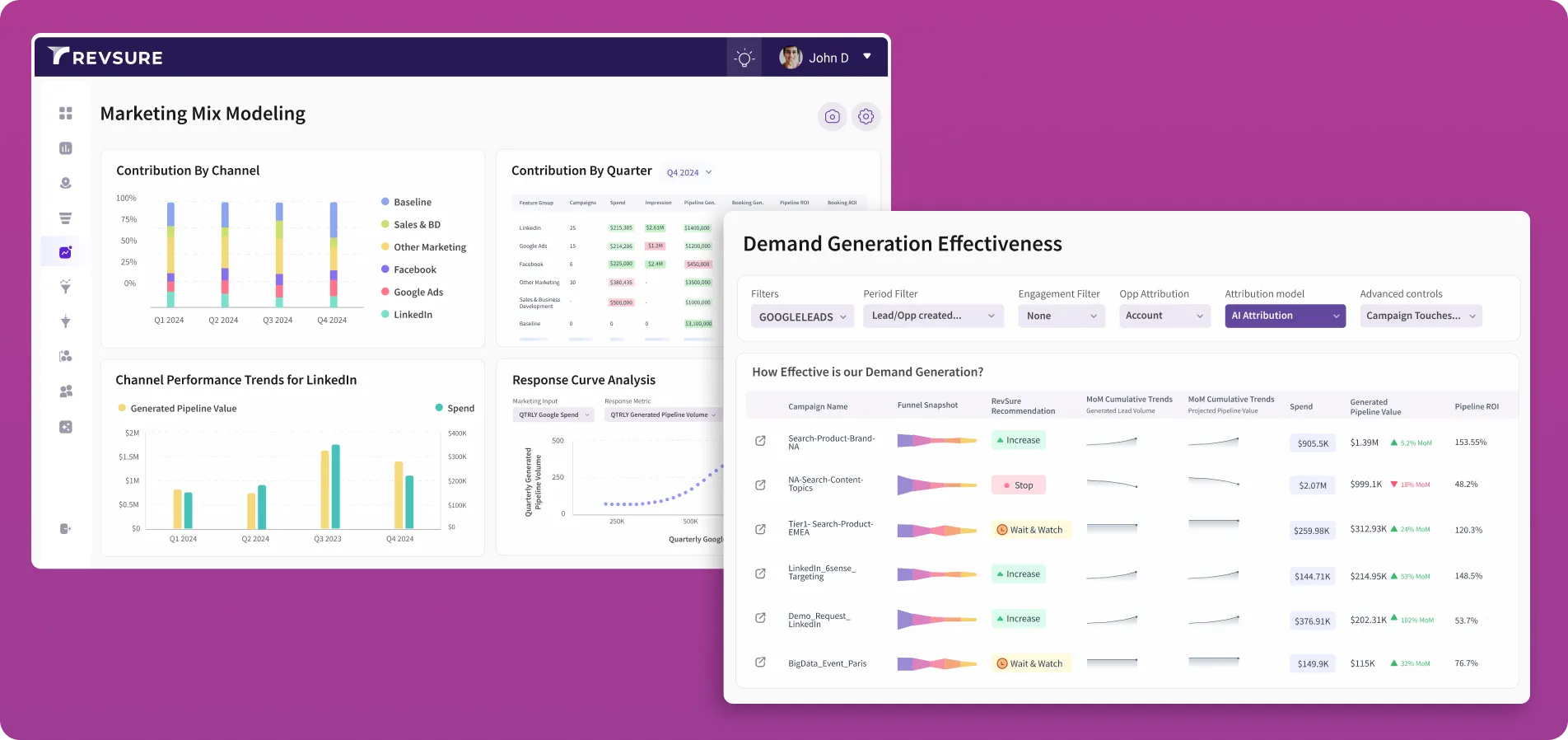
Integration Benefits
By integrating MMx and MTA, companies can achieve a balanced approach to their marketing strategies, leveraging the strengths of both methodologies to drive optimal results.
How to apply the Different Attribution Methods
Different attribution methods offer unique strengths. While Al and data-based attribution methods are ideal for accuracy, some rule-based methods are easier to understand and apply across GTM teams. The following guidelines can help determine which attribution method to use based on your business objectives. However, these are just suggestions, and the specific attribution method you choose should align with your GTM motion, business specifics, and overall goals.
Use the Any Touch model for a comprehensive view, giving 100% credit to each touchpoint throughout the customer journey.
If you need to choose one method, opt for Linear attribution for fair distribution of credit across all touchpoints.
Top of the Funnel (TOFU): Use First Touch attribution to identify which campaigns and channels generate initial awareness and capture new leads.
Middle of the Funnel (MOFU): Use Linear attribution to distribute credit fairly across all touchpoints leading to a conversion.
Bottom of the Funnel (BOFU): Use Last Touch attribution to focus on the touchpoints that directly lead to conversions and closing deals.
Cross-Funnel Channels: Use Linear Multi-Touch Attribution (MTA) to provide equal credit to all touchpoints.
Account Engagement: Always consider Account Engagement in opportunity and pipeline attribution to capture the influence of all touchpoints across the account.
Ensure accurate data integration from all marketing channels for consistent and reliable attribution analysis.
Regularly review and adjust attribution models to reflect changes in marketing strategies, customer behavior, and market conditions.
Use flexible and customizable attribution tools tailored to your organization's specific needs.
Managing data consistency and integration across multiple platforms.
Balancing simplicity and accuracy in attribution models.
Continuously optimizing attribution models to improve marketing effectiveness and ROI.
Benefits of Al-Based Attribution
Al-based attribution models offer advanced capabilities that traditional CRM and Marketing Automation Platforms (MAP) often lack. By leveraging artificial intelligence and machine learning, these models provide more accurate, comprehensive, and actionable insights into marketing performance.
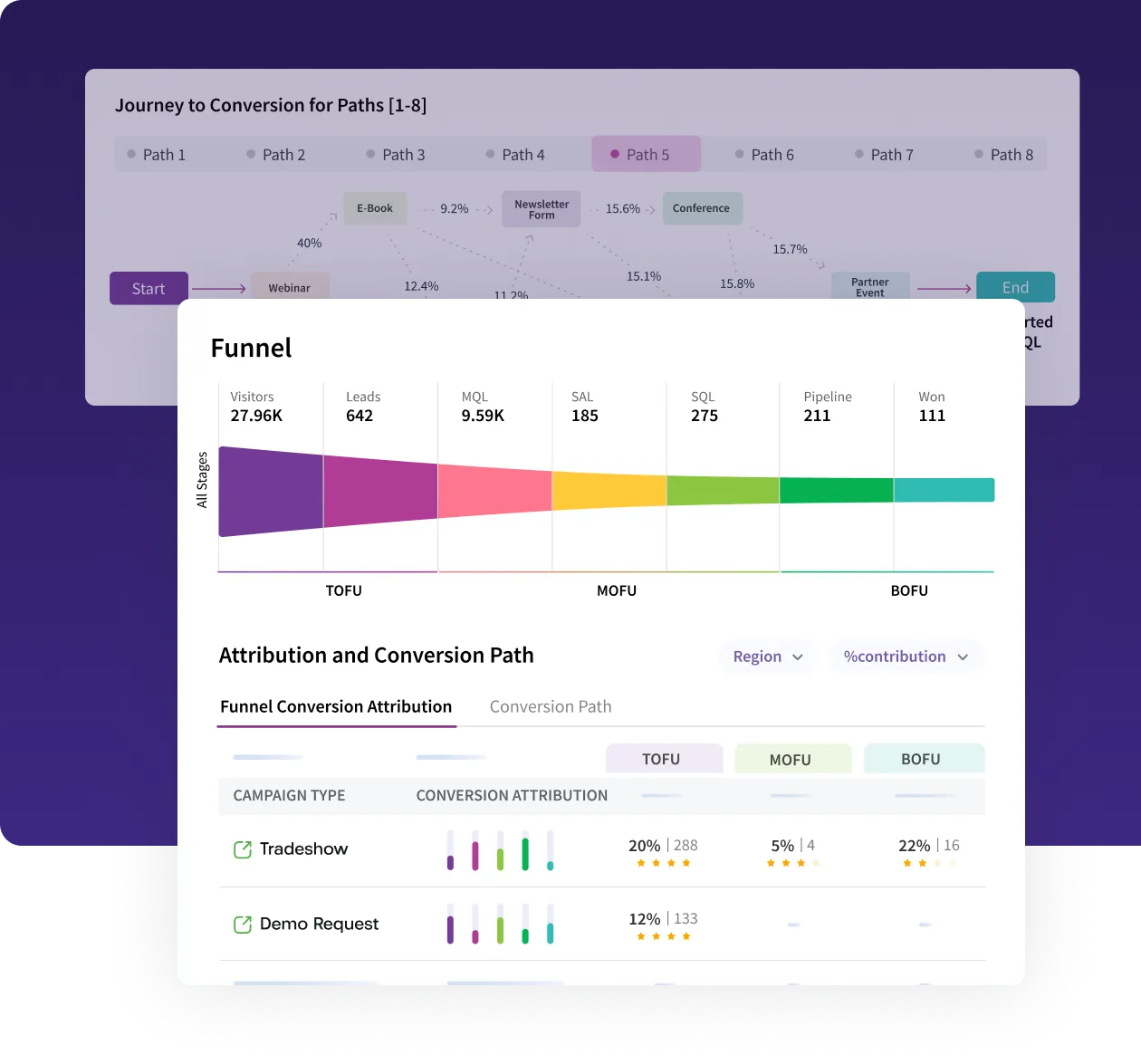
Key Benefits
Account-Based Attribution
Al models excel at analyzing interactions across multiple stakeholders within an account, offering a holistic view of account engagement and influence.
Multi-Touch Attribution
Al-based models handle multi-touch attribution, distributing credit across all touchpoints in a customer's journey, leading to more informed marketing strategies.
Accurate First Touch Identification
Al can process vast amounts of data to precisely determine the true first touch in a customer's journey, improving attribution accuracy.
Complex Buyer Journeys
Al can track and attribute complex buyer journeys spanning multiple channels and touchpoints, integrating data from various sources for a comprehensive understanding.
Enhanced Data and Al Integration
Al models continuously learn and adapt by integrating data from multiple sources, leading to improved attribution accuracy over time.

Attribution Math
Traditional attribution methods rely on whole numbers, while Al-driven and multi-touch attribution (like W or J models) use fractional credits. This means a particular campaign or touchpoint may receive fractional credit (e.g., 0.5%, or 33%).
Primary Contact Attribution
What it does: Focuses on the touchpoints experienced by the single most important contact involved in the sale.
When to use: Useful when understanding how marketing influenced the key decision-maker in simpler deals or those with a clearly defined decision-maker.
Insight: Provides focused insights into the exact journey of the most influential person, helping personalize future campaigns.
Account-Based Attribution
What it does: Assigns partial credit to multiple contacts or leads associated with an account.
When to use: Best for mid-market or enterprise sales where multiple stakeholders are involved Credits are spread across numerous contacts and hundreds or thousands of touchpoints.
Insight: Offers a comprehensive view of how various contacts across an account interacted with marketing, though each campaign or touchpoint receives smaller, diluted credits.
Switching Between Primary Contact and All Contacts Informs Marketing
For Large Deals:
Switching to an all-contacts or account-based approach provides insights into how entire teams or decision-making committees engage with marketing. This is critical for refining campaigns that appeal to groups, a strategy vital in enterprise sales.
For Smaller or Direct Sales:
Focusing on the primary contact helps pinpoint which marketing efforts influenced the key decision-maker, offering more targeted insights. This approach works well in mid-market or single-buyer contexts.
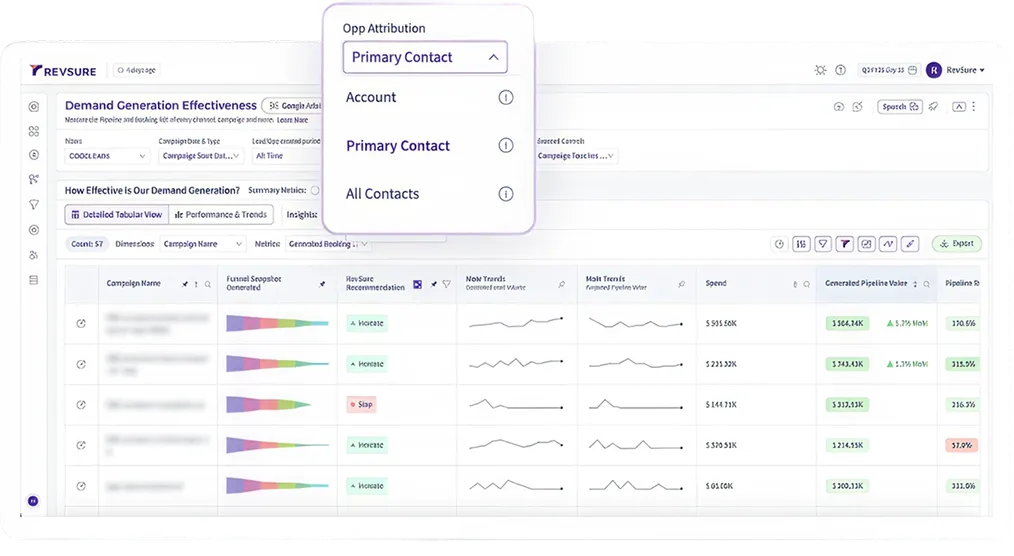
Dilution of Credit:
In account-based attribution, the more people and touchpoints involved, the more diluted the credit becomes for each. This helps understand how broad marketing campaigns impact multiple individuals over time. In contrast, focusing on a primary contact consolidates the credit into fewer touchpoints, making it easier to identify which interactions influenced the most critical person.
RevSure Al-Based Attribution
RevSure's Al-based attribution offers a comprehensive approach to capturing the complex web of interactions and touchpoints across the customer journey. By utilizing probabilistic Markov Chain models, it identifies the contributions of various campaigns, channels, and touchpoints towards conversion at every stage of the funnel and lifecycle. Unlike traditional rules or opinion-based attribution methods, RevSure relies on data-driven insights.
Full Funnel Attribution: RevSure provides full-funnel attribution, analyzing each stage from Visitor to Pipeline and Closed-Won. It incorporates not only marketing campaigns but also SDR/BDR campaigns, sales campaigns, and partner campaigns.
Cross-Functional Campaign Analysis: RevSure's approach enables marketing teams to discover not just the impact of each campaign, but the specific role each campaign plays across the funnel. For example, some campaigns may excel at driving conversions at the Top of the Funnel, while others may perform better at the Middle or Bottom stages.
RevSure's Al-based attribution allows teams to optimize their strategies by understanding the unique contribution of every campaign, ensuring a more informed and targeted approach to marketing and sales efforts.
Continuous Improvement and A/B Testing
Continuous improvement and A/B testing are essential due to changing market conditions driven by PEST factors (political, economic, social, and technological) as well as evolving company and competitor offerings.
Statistical Significance: Ensure tests reach statistical significance and strike a balance between pipeline generation and booked income.
Data-Driven Optimization: Use robust data analysis to assess the impact of changes and optimize for better performance.
Campaign-Level and Ad-Level Insights: Evaluate the overall impact of campaigns while examining performance at both the ad group and ad level. Avoid shutting down entire campaigns if certain parts are performing well.
Avoiding Short-Sighted Wins: Don't focus solely on easy wins like higher click rates without considering how they translate to booked income.
Long-Term Alignment: Ensure A/B testing strategies align with long-term business goals and deliver meaningful insights for sustained growth.
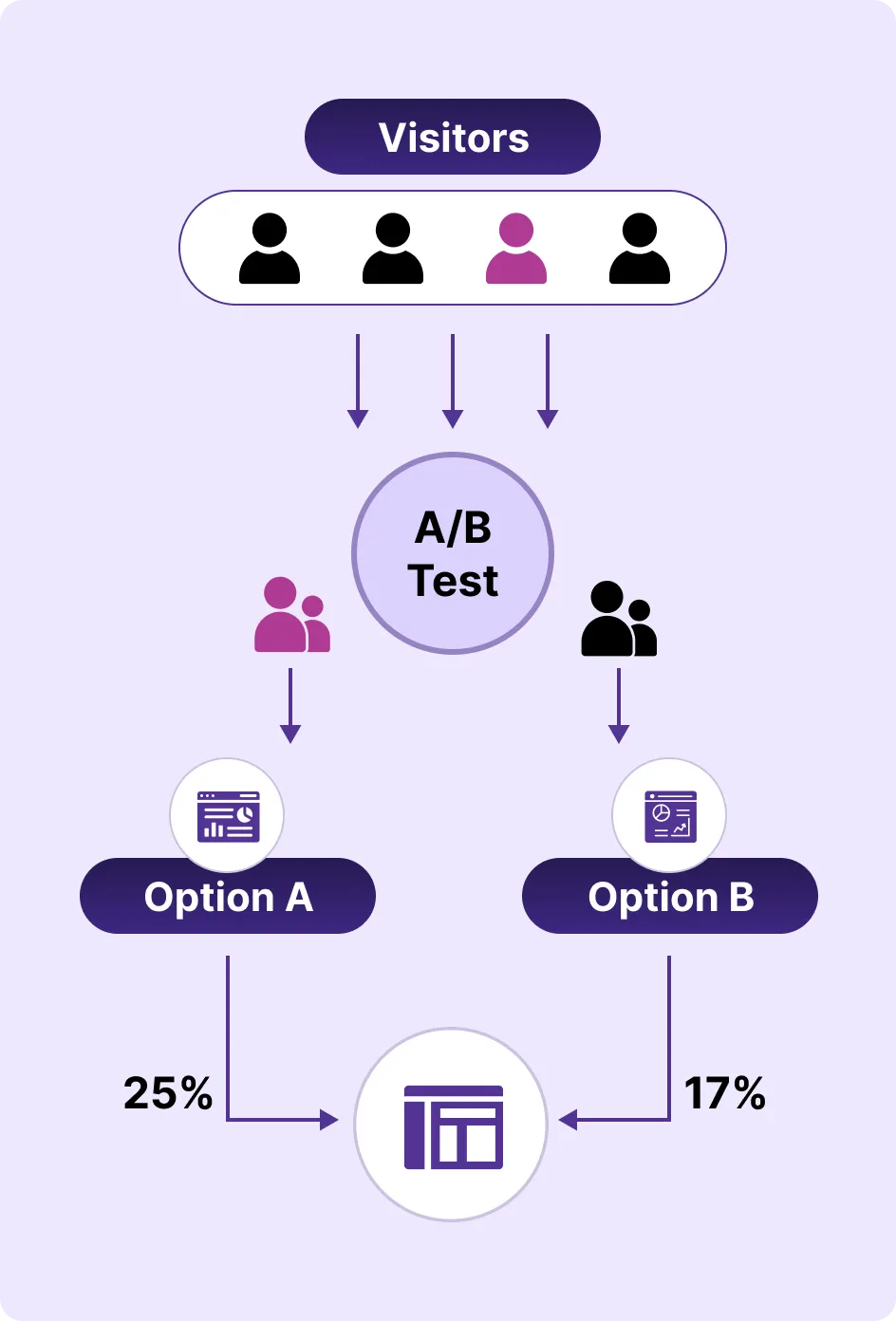
Customer Journey Mapping
Accurate customer journey mapping is essential for orchestrating creative messaging and ensuring SDR/BDR/AE teams focus on the right leads at the right time.
Map All Stages: Include all stages, particularly from SQL to Opportunity to Closed, while accounting for unknown leads as well.
Identify Pain Points: Use journey mapping to uncover pain points and opportunities to improve the customer experience.
Account-Based Awareness: Even if a contact is in a sales stage, don't overlook marketing touchpoints or interactions of other leads or contacts associated with the same account.
Comprehensive Mapping: Ensuring complete and accurate mapping that informs effective marketing strategies.
Ongoing Updates: Continuously updating journey maps to reflect changes in customer behavior and market dynamics.
Conclusion
There is no single method for "attributing, integrating, and syncing" marketing efforts. This white paper serves as a guide to enhancing marketing effectiveness through full-funnel attribution, data-driven decision-making, and continuous optimization. The outlined strategies and best practices should be applied with consideration of a company's unique requirements and challenges.
While some marketing tools can be developed in-house, the complexities of managing multiple integrations, evolving APIs, and the rapid advancement of Al models make it more efficient to purchase robust full-funnel attribution systems. Home-built systems can quickly become outdated and expensive to maintain.

Decode the Deep Funnel to Prove ROI and Scale Winning Campaigns
Schedule your personal demo to learn how you can gain full-funnel
attribution insights and improve conversions.
.webp)










